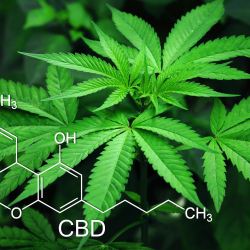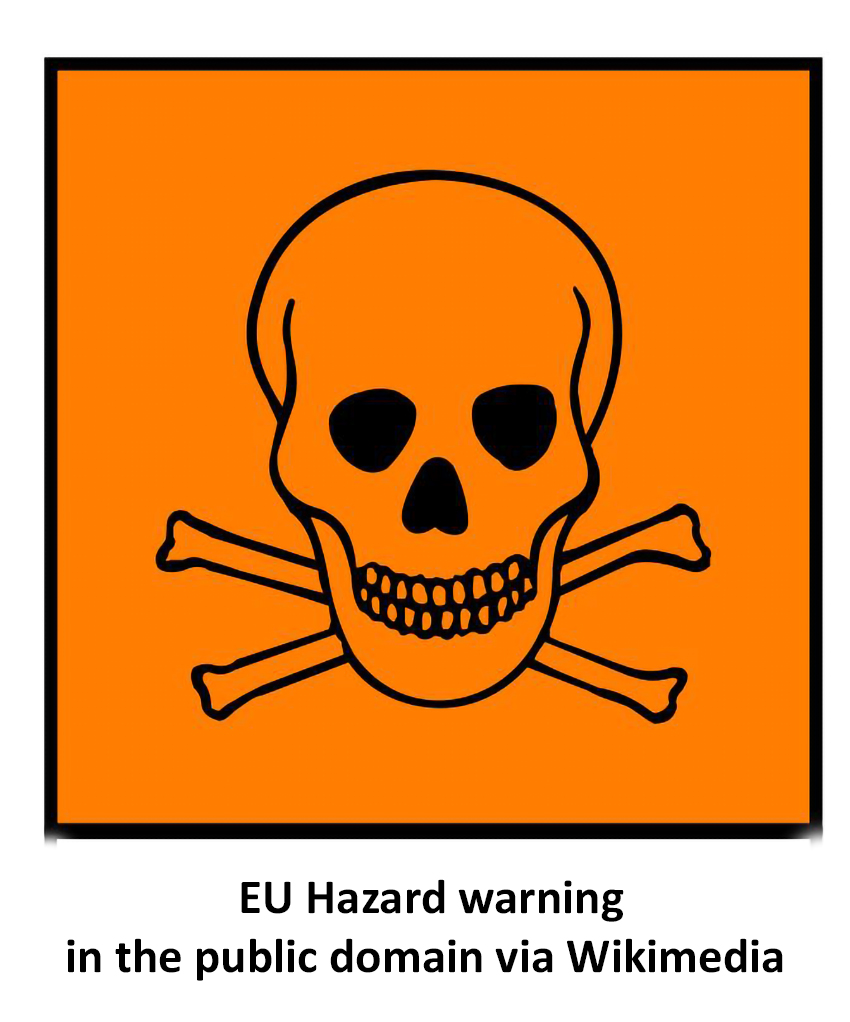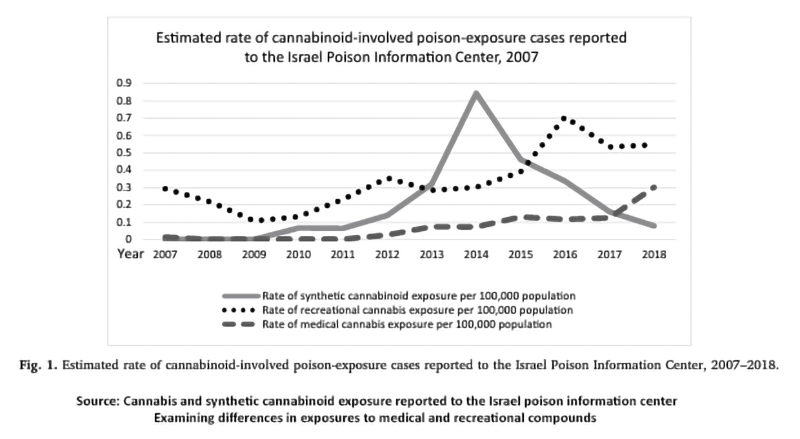Lock up your gummy bears, mom, and barricade the hash brownies, pop. Medical centers worldwide report an alarming increase in emergency department visits for young children poisoned by unwitting cannabis exposure. Easy procurement of cannabis goodies where marijuana is legalized or medicalized seems to be driving the increase. So, what’s to be done?
Unintentional injuries are the leading cause of death for children under 19 in the United States. The sad truth is that most of these are preventable. The good news is that these numbers decreased since 2010 – in all states -- except California, where the increase is from poisonings, the most preventable of the subcategories of accidental causes of death. Over the last decade, poisoning deaths nationwide among Hispanic and Black children have increased 50% and 37%, respectively.
The Big Picture
Within the subcategory of poisons, the highest death rates and hospitalizations come from medications. Those vials and bottles without a skull and crossbones or other clear warning seem to beckon a tasting, dissuading, or disincentivizing precautions against accidental exposures. Only 5% of adverse events come from dosing errors - the rest come from unsupervised kids accessing Mom, Pop’s, and Sister Sue’s legitimate drugs and pigging out.
“About 165 kids -- or roughly four school busloads of children -- are seen in emergency rooms for medication-related treatment every day in the US. Every one of those trips was preventable. We can and must do better.”
Kate Carr, President, and CEO of Safe Kids Worldwide.
Advocacy groups and public relations campaigns have targeted awareness of these issues. We have National Safety Month in June, National Safe Kids Week in May, plus a slew of advisories urging keeping medicines out of the reach of children. But now we have a new culprit that defies categories and comes with a false aura of safety, which doesn’t motivate preventive behavior. That new product touted as safe and certainly legal in many places is cannabis, aka marijuana. Is it a drug? Is it a recreational vehicle? International laws differ, and people’s cognition of its effects affects how it’s handled.
Marijuana, Marijuana use – legalized and liberalized
In the US, marijuana is legal for recreational use in 19 states and three districts, according to the National Conference of State Legislatures. With the aura of legality for recreational use comes a laxity in keeping the drug- and marijuana is still classified as a drug – away from little kids.
“Under the Controlled Substances Act of 1970, the Drug Enforcement Agency still classifies cannabis as a Schedule I drug, "with no currently accepted medical use and a high potential for abuse." (Other Schedule I drugs include heroin and LSD, while cocaine is listed as a Schedule II drug).”
Recognition of cannabis’ dangers is coming to the forefront, even if used as directed, thanks, in part, to ACSH. Recently, we read Josh Bloom’s interview with Dr. Roneet Lev, an addiction expert, noting that intentional use of cannabis – even on an isolated or short-term basis has been reported and not infrequently, in teens, to cause cannabis-induced poisoning.
As teenage use increases, so do adverse effects related mainly to legalization and a misperception of safety:
“The epidemic is driven partially by changed attitudes toward its use and by legalization, but is driven largely, at least in Canada, by cannabis companies that are pushing it to this age group and claiming it’s safe, while in reality, it’s anything but safe,”
Meldon Kahan, MD, Medical Director, Substance Use Service Women’s College Hospital, Toronto.
Adolescents typically don’t appreciate the risks associated with cannabis, “a belief that has been “steadily growing,” in tandem with the loosening of legal restrictions. This lack of danger appreciation applies not only to them but to parents, fostering behavior that leaves cannabis consumables untended and in full view. (When one worried about being busted, no one left the goodies out and about –providing tempting, tantalizing treats for the tots).
The Israeli and Canadian Experience
Recent data from Israel concerning the consequences of the relaxed attitude toward marijuana are disturbing. Even though recreational use of the drug is still prohibited, Israel does allow cannabis use for therapeutic purposes. [1] Over 100,000 Israeli adults hold Health Ministry licenses to purchase medical cannabis to relieve pain and other medical concerns, feeding into the relaxed view of marijuana-associated dangers.
Along with changes in attitudes toward marijuana, now generally regarded as benign, Israeli hospitals are also seeing an alarming rash of inadvertent poisonings in young children. According to the Israel Poison Information Center, There has been an alarming rise in unintentional cannabis poisoning or intoxication in children. One hospital reported:
“.. seeing between 15 and 20 cases of cannabis poisoning in young children and toddlers every year, with the youngest so far an eight-month-old baby,”
Dr. Yael Luria, Rambam Medical Center.
Marijuana affects children differently than adults - children are more susceptible to adverse effects due to differences in weight and the development of their nervous systems. Consequently, a small amount can have a significant impact, including lethargy, difficulty walking, speaking, balancing, swallowing, seizures, and loss of consciousness. Some of these signs and symptoms are so non-specific that diagnosing cannabis causation can be elusive. Yet, the cannabis-related causality is becoming so frequent that physicians advise their colleagues to “consider cannabis toxicity in any child with sudden onset of lethargy or ataxia.”
Most exposures in children are accidental. The Israeli report notes that children under twelve usually ingest cannabis by mistaking “edible” marijuana like gummy bears, brownies, cookies, and lollipops for food or candy. Sometimes, they find their parents’ or siblings’ joints, cannabis cigarettes, or, increasingly frequently, the more accessible cannabis hemp oils. In other cases, exposure comes from passive smoke.
The Canadian experience recounted in JAMA Open Network is similar. In Ontario, between 2016 and 2021, 522 emergency department visits were reported for cannabis exposure in children, with an average age of exposure of 3.8 years. Visits ranged from 81 during pre-legalization to 317 once cannabis was fully legalized.
“Increases in [Canadian] ED visit frequency and severity occurred despite strict regulations that largely exceed US regulations (e.g., a maximum of 10 mg of tetrahydrocannabinol per entire edible package, child-resistant packaging, and marketing restrictions) and consumer education campaigns.”
Researchers in the UK, where the most common exposures were from cannabis resin, cookies, and joints, came to the same conclusion as the Canadians and Israelis:
“Unintentional cannabis ingestion by children is a serious public health concern and is well-documented in numerous studies and case reports.”
To decrease pediatric cannabis exposure, the Canadian researchers advised: “Further regulatory measures, such as limiting formulations and appearance of commercial edibles, combined with education for parents and caregivers.”
Perhaps a more straightforward and more expedient public health response might just be to include a warning on all forms of cannabis, including edibles:
“Like all medicines, keep this drug out of children's reach (or breathing zone).”
[1] It has been decriminalized for private use in those over 19 since 2019, although civil fines can be imposed.
Sources: Cannabis and synthetic cannabinoid exposure reported to the Israel poison information center: Examining differences in exposures to medical and recreational compounds Internation Journal of Drug Policy DOI: 10.1016/j.drugpo.2020.102711



